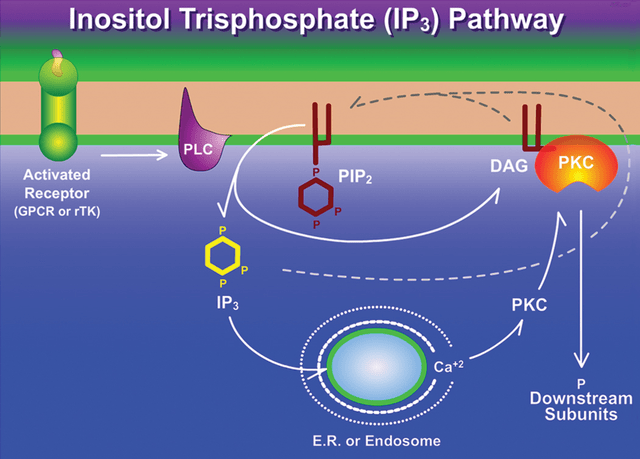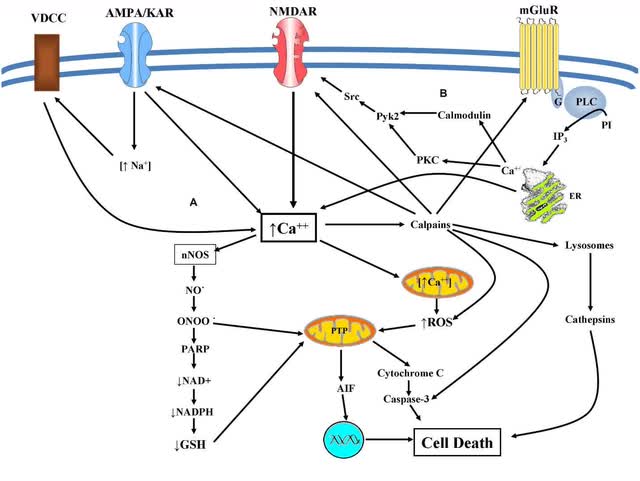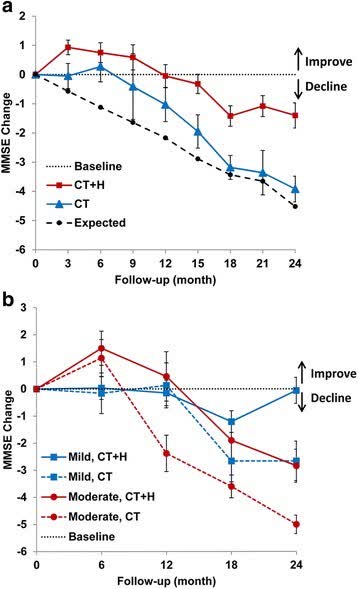Anavex's Blarcamesine: Sigma-1 Receptor Agonists And Antioxidants For Alzheimer's Disease

Summary
- Blarcamesine, a sigma-1 receptor agonist, may be a more effective antioxidant than Aricept and galantamine in treating Alzheimer's disease.
- If granted accelerated approval by the FDA, Anavex's stock value is expected to rise significantly.
- Anavex may provide the best investment opportunity and drug hope for the near long-term stabilization of mild Alzheimer's disease in those with functioning sigma-1 receptors.
Anastasiia Shavshyna/E+ via Getty Images
Sig-1R agonists would be ideal drug candidates for translational medicine, because the known ligands have limited side effects: their modulatory action starts only under pathological conditions… [However] Application of Sig-1R agonists alone, very probably, will not be sufficient for the treatment of neurodegenerative diseases (source of quote).
The inflammatory mediator peroxynitrite, when generated in excess, may damage cells by oxidizing and nitrating cellular components. Defense against this reactive species may be at the level of prevention of the formation of peroxynitrite, at the level of interception, or at the level of repair of damage caused by peroxynitrite (source of quote).
I have compared the effects of the sigma-1 receptor agonists Anavex’s (NASDAQ:AVXL) 2-73/ blarcamesine and Aricept/donepezil in a previous article (and most recent article). In this article, I will also compare blarcamesine with another (likely) sigma-1 receptor agonist: the isoquinoline alkaloid galantamine. The comparison should clarify the combined role that sigma-1 receptors and direct antioxidants play in the treatment of Alzheimer’s disease.
Blarcamesine may be a better antioxidant than Aricept and galantamine which may explain why it helps nearly stabilize early stage Alzheimer's disease over longer periods of time. If granted accelerated approval by the FDA (allowing the drug to be sold while a confirmatory trial is run), AVXL stock value should rise considerably.
Sigma-1 Receptor Agonists in the Treatment of Alzheimer's Disease
As sigma-1 receptor agonists, Anavex’s blarcamesine, Aricept, and galantamine limit the formation of peroxynitrite. Blarcamesine, Aricept, and galantamine may also scavenge oxidants (such as peroxynitrite), but the evidence for this is inconclusive at this point. Aricept may not be an effective antioxidant at therapeutic doses. The antioxidant effects of galantamine may be partially offset by its activation of NMDA receptors. The evidence that blarcamesine is an antioxidant is largely indirect. More studies on the potential antioxidant capacities of each is needed.
Sigma-1 receptor agonists on their own slow down mild Alzheimer’s disease for about a year. The following results once adjusted for different baselines are nearly identical (the expected placebo decline from a Mini-Mental State Examination score of 21 is around 2.3 points at one year).
Galantamine (280 patients at one year)
- 23.17 to 22.98
Aricept/donepezil (492 patients at one year)
- 22 to 21
Anavex 2-73/blarcamesine (at the highest dose: 9 patients at 57 weeks; approximate calculation)
- 21 to 19.3
Sigma-1 receptor agonists are less effective or ineffective in those with deficits in sigma-1 receptors (either low levels or low activity). They only slow down the progression of mild Alzheimer’s disease. And they have almost no effect on moderate to severe Alzheimer’s disease (as will be discussed later).
In regards to the second point, sigma-1 receptor agonists do not completely stop the release of intracellular calcium which contributes to oxidative stress and they do not inhibit the production of diacylglycerol which also contributes to oxidative stress (see chart below).
Pathway in Early Alzheimer's Disease (Science Signalling)
GPCR: G Protein-Coupled Receptor
rTK: receptor Tyrosine Kinase
PLC: Phospholipase C
PIP2: Phosphatidylinositol 4,5 Bisphosphate
IP3: Inositol 1,4,5 triphosphate
ER: Endoplasmic Reticulum
Ca+2: Calcium Ion
DAG: Diacylyglycerol
Sigma-1 Receptor Agonists and Antioxidants
For mild Alzheimer’s disease, a sigma-1 receptor agonist must also be a strong antioxidant or combined with a strong antioxidant to stabilize or nearly stabilize the disease over longer periods of time. The stronger the antioxidant the better the results. Blarcamesine and panax ginseng for instance, may help reduce and reverse oxidative and nitrostative stress via the scavenging of hydrogen peroxide (early in the disease) and peroxynitrite. Blarcamesine is a tetrahydrofuran derivative and tetrahydrofurans appear to be excellent hydrogen and electron donors, which is what is needed to accomplish the above. De-nitration and/or the reversal of oxidation leads to an increase in critical neurotransmitters in Alzheimer’s disease (including those needed for the accessing of short-term memory, sleep, alertness, social recognition, and balanced mood), the partial regeneration of neurons, and the reduced death of neurons.
Three year studies appear to confirm the value of the sigma-1 receptor agonist/antioxidant approach to the treatment of mild Alzheimer’s disease. One should note that there was a high dropout rate in the galantamine and donepezil studies which may have reduced the number of participants with sigma-1 receptor variants and very few individuals with a sigma-1 receptor variants completed the Anavex phase 2a trial, so the results in the general population may not be as good.
For patients with mild cognitive impairment and mild Alzheimer’s disease and who did not have sigma-1 receptor and catechol-o-methyltransferase gene variants, blarcamesine at the highest concentration produced a 2 point improvement in MMSE scores at 57 weeks and a three point improvement in MMSE scores at 70 weeks. In eight patients at high concentrations (most, but not all of whom, fit the description above) the decline was about 1 point at 148 weeks (from a baseline of around 21). In the case of Aricept the decline in MMSE scores at three years was 3.8 points (from a baseline of 22). For galantamine, the decline in MMSE scores at three years was 2.6 points (from a baseline of 23.17).
By combining the functions of a sigma-1 receptor agonist and a peroxynitrite scavenger, blarcamesine appears to nearly stabilize mild Alzheimer’s disease for at least 148 weeks in those who having a functioning sigma-1 receptor.
By comparison, panax ginseng which inhibits phospholipase C activity and is a peroxynitrite scavenger, produced a 2.6 point improvement (21.4 to 24) at the higher dose in those with mild Alzheimer’s disease at 96 weeks (clinical trial). Importantly this improvement occurred regardless of sigma-1 gene status.
For Moderate to Severe Alzheimer's Disease
Sigma-1 receptors have little to no effect on moderate to severe Alzheimer’s disease because some of the receptors and enzymes involved in the onset and initial progression of Alzheimer’s disease become damaged by oxidation and nitration. The nitration of protein kinase C, for instance, largely abrogates the effects of sigma-1 receptor agonists on moderate to severe Alzheimer’s disease. Despite the inactivation of protein kinase C, the NMDA receptor remains over-activated for some time at least due to high levels of glutamate (caused by the peroxynitrite-mediated disabling of glutamate transporters).
Alzheimer's Disease Pathways (Frontiers in Cellular Neuroscience)
Key acronyms
PKC: Protein Kinase C
mGluR: metabotropic Glutamate Receptor (a g-protein coupled receptor)
NMDAR: N-Methyl-D-Asparate Receptor (an ionotropic glutamate receptor)
ONOO-: peroxynitrite
GSH: Glutathione
Ginseng may help improve glutamate transport. It may also inhibit peroxynitrite formation after NMDA overactivation via inhibition of nuclear factor kappa B as well as scavenge peroxynitrite. In part due to these actions, panax ginseng may stabilize moderate Alzheimer’s disease for at least a year.
Herbs plus Conventional Therapy for the Treatment of Alzheimer's Disease (BMC Complementary and Alternative Medicine)
Alzheimer’s disease is like a stopped sink. If you turn down the tap you slow down the filling up of the sink, but if you turn down the tap and remove some of the water, you can stabilize the water levels in the sink. Early in Alzheimer’s disease and in those with the “right” genetic makeup, sigma-1 receptor agonists inhibit oxidative and nitrostative stress, neuroinflammation, mitochondrial dysfunction, synaptic dysfunction, and the death of neurons (i.e. they turn down the tap), but they can only stop or nearly stop the progression of the disease when combined with compounds that also scavenge and reverse part of the damage done by peroxynitrite (i.e. bail out the water). Blarcamesine may come closer to achieving this objective than Aricept and galantamine, because it may be a more effective antioxidant than either. By working further upstream and downstream than blarcamesine, panax ginseng may help those without a functioning sigma-1 receptor and those with moderate Alzheimer’s disease for a while at least.
If the 50mg group numbers in Anavex’s phase 2b/3 clinical trials match those of the high concentration numbers in its phase 2a trial, then the FDA is likely to grant accelerated approval for blarcamesine for mild Alzheimer’s disease in individuals who have functioning sigma-1 receptors. An accelerated approval would allow Anavex to sell blarcamesine while it runs a confirmatory phase 4 clinical trial. Even taking into account the skepticism that has followed overall positive results in the past, Anavex’s stock value should rise quite significantly following such a decision. If however, Anavex has to run a larger (and perhaps longer) phase 3 clinical trial to gain the FDA’s approval that would seriously hurt the company’s stock value (although it currently has the resources to complete such a trial). FDA approval of an Anavex compound for another neurological condition (such as pediatric Rett syndrome) would soften the blow a little bit.
In conclusion, despite their slow release of data, Anavex may provide the best investment opportunity and the best drug hope to date for the near long-term stabilization of mild Alzheimer’s disease in those with functioning sigma-1 receptors.
This article was written by
Analyst’s Disclosure: I/we have no stock, option or similar derivative position in any of the companies mentioned, and no plans to initiate any such positions within the next 72 hours. I wrote this article myself, and it expresses my own opinions. I am not receiving compensation for it (other than from Seeking Alpha). I have no business relationship with any company whose stock is mentioned in this article.
Seeking Alpha's Disclosure: Past performance is no guarantee of future results. No recommendation or advice is being given as to whether any investment is suitable for a particular investor. Any views or opinions expressed above may not reflect those of Seeking Alpha as a whole. Seeking Alpha is not a licensed securities dealer, broker or US investment adviser or investment bank. Our analysts are third party authors that include both professional investors and individual investors who may not be licensed or certified by any institute or regulatory body.
